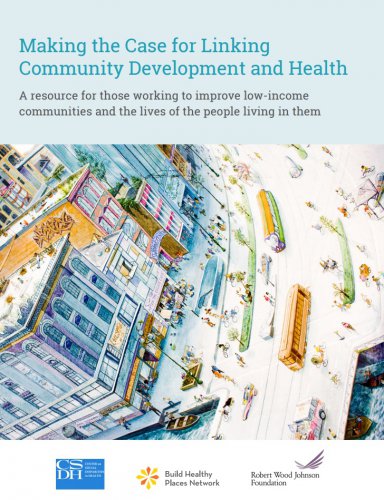This report, published in partnership by the Center on Social Disparities in Health, the Build Healthy Places Network, and the Robert Wood Johnson Foundation, is a “resource for those working to improve low-income communities and the lives of the people living in them.” Despite growing recognition that social and economic conditions are the primary drivers of health, the fields of community development and public health remain siloed. This new report from the Robert Wood Johnson Foundation’s Build Healthy Places Network outlines specific opportunities to integrate the two fields and overcome barriers to collaboration. It also includes recommendations on how to measure the impact of cross-sector collaborations and refine programs accordingly.
Download Making the Case for Linking Community Development and Health
It has been said that your ZIP code may be more important for your health than your genetic code. This is because factors known as the social determinants of health (such as housing, education, job opportunities, child care, and transportation) can greatly influence your chances of becoming sick and dying early. Your address reflects the daily living conditions that can create—or limit—your opportunities to be healthy.
Building a Movement to Improve Low-Income Communities and the Lives of the People Living in Them
While the connections between poverty and poor health have long been recognized, a new but growing movement is tackling these issues in innovative ways by connecting two sectors—community development and health—that have previously worked in relative isolation from each other.
For decades, diverse organizations within the community development sector have worked to improve the physical and economic infrastructure of low-income neighborhoods—with a focus on improving places. And, for over a century, public health and medical care institutions serving poor communities have worked to improve the health of socially disadvantaged groups—with a focus on the people who live in lowincome neighborhoods.
Table of Contents
Introduction
1. What Do Community Development and Health Have in Common?
2. How Can the Community Development and Health Sectors Connect and Collaborate?
3. What Are the Barriers to Working at the Intersection of Community Development and Health and How Can They Be Overcome?
4. Why and How Should the Health Impact of Community Development Project Be Measured?
Conclusion
Appendix
References
Format





